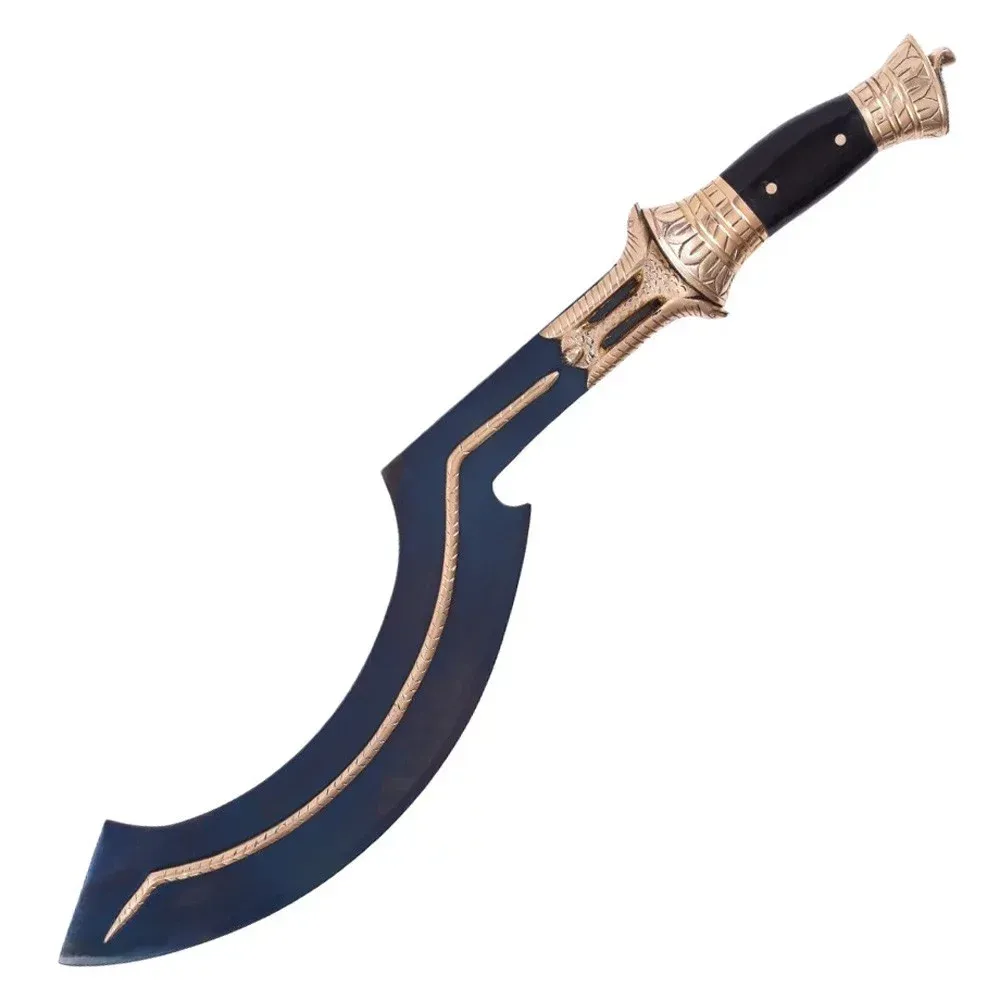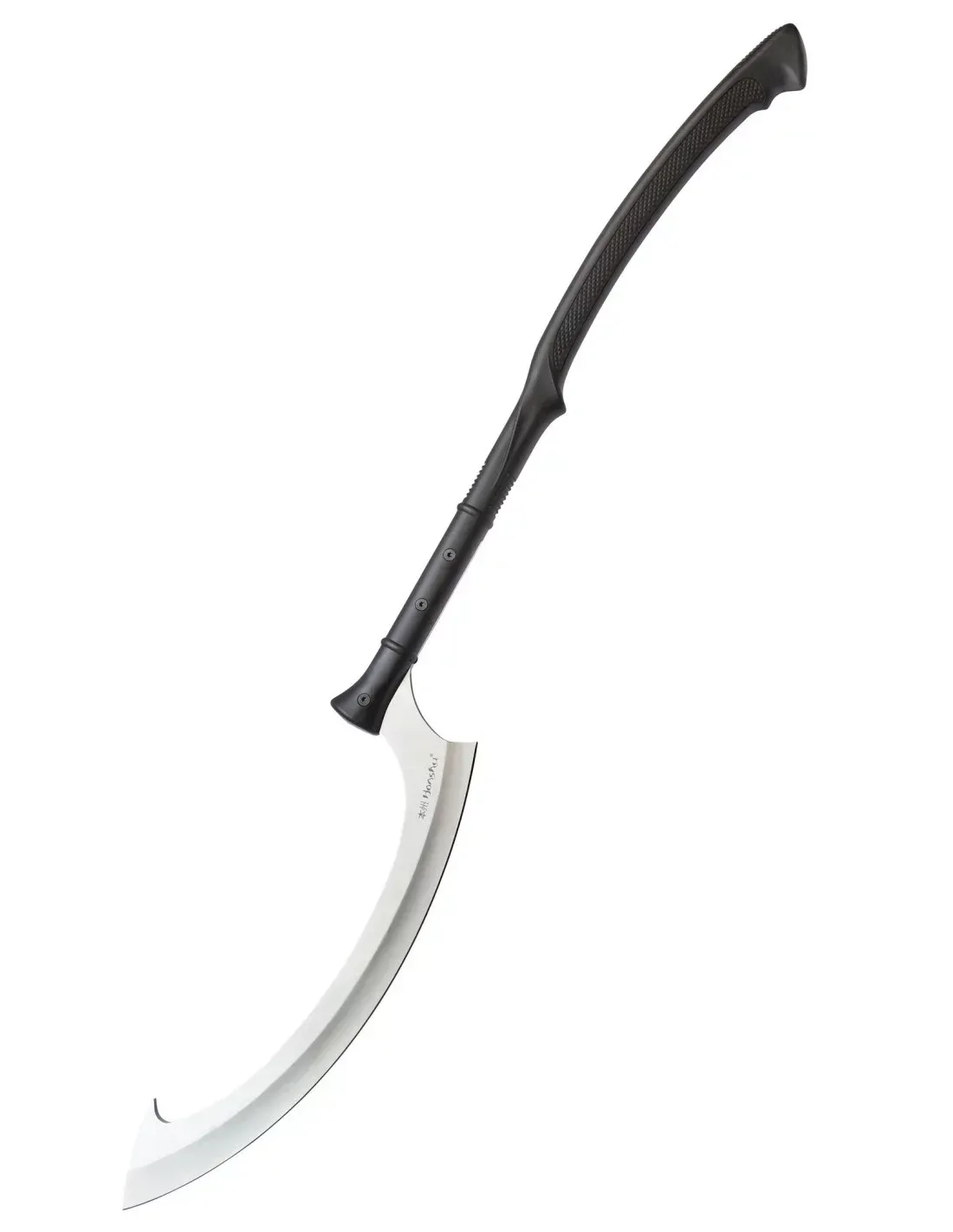What is a Khopesh?
The history of humanity has always been imbued with the development of tools and weapons that served not only for survival but also as symbols of power and technological progress. Among these weapons, the Khopesh stands out as an emblematic creation of Ancient Egypt, known both for its distinctive design and its effectiveness in close combat.
Origin and History of the Khopesh
The Khopesh, also called kefresh or jepesh, is a sword whose unmistakable shape has left an indelible mark on the archaeology of Ancient Egypt. Originally, its design was inspired by Mesopotamian battle axes, and although it was not an invention of the Egyptians, it was in this civilization where it reached its greatest development and popularity.

Characteristics and Design of the Khopesh
The design of the Khopesh is characterized by its C-shaped curved blade, resembling a sickle. This unique design places its edge on the convex part of the blade, allowing the sword not only to cut deeply in combat but also to become an excellent resource for attack and defense strategies. For example:
- It allows grabbing an opponent's arm.
- It can pull enemy shields, leaving them vulnerable.
Dimensions and Weight
In terms of dimensions, a typical Khopesh measures approximately 60 centimeters in length and has an average weight of 2.3 kilograms. This combination of size and weight makes it a formidable weapon that required skill and strength to handle effectively in combat.
Symbolism and Ceremonial Use
Beyond being a tool of war, the Khopesh held significant symbolic value. Frequently represented in Egyptian art, it was common to see images of pharaohs wielding this type of sword. In many cases, Khopesh swords were even buried with their royal owners, as is the famous case of Pharaoh Tutankhamun.

Evolution and Decline of the Khopesh
The popularity of the Khopesh began to decline around 1300 to 1200 BC. This change was largely a response to the evolution of other combat techniques and improvements in armor, which demanded a different approach to weaponry. Over time, the Khopesh was replaced by more conventional straight swords, which offered versatility in a wide range of warfare scenarios.
Legacy of the Khopesh
Although it is no longer used in modern times, the legacy of the Khopesh continues to be remembered as a masterpiece of Egyptian military design. The combination of military practicality and cultural symbolism cements it as one of the most fascinating remnants of ancient weaponry technology.
| Aspect | Description |
|---|---|
| Origin | Ancient Egypt, inspired by Mesopotamian axes. |
| Shape | Curved, C-shaped or sickle. |
| Size | Approximately 60 cm in length. |
| Weight | Average of 2.3 kg. |
| Purpose | Military and ceremonial. |
| Evolution | Replaced by straight swords around 1300-1200 BC. |
With its origins deeply rooted in the culture of the ancient Near East and its rise in Egyptian history, the Khopesh not only provides insight into ancient combat tactics but also the symbolic significance that these weapons held in their time. The fascinating tradition of the Khopesh continues to amaze historians and enthusiasts to this day.




























